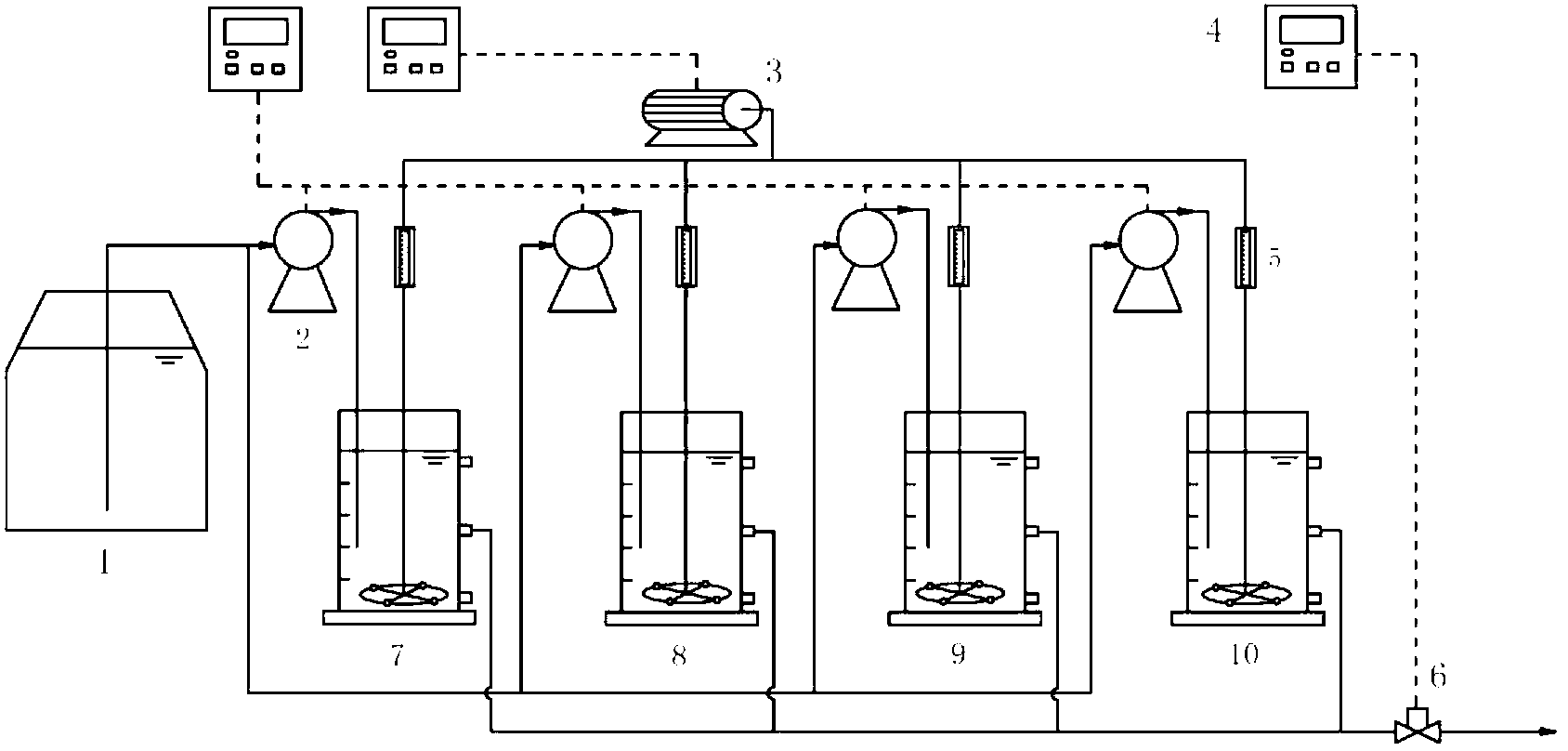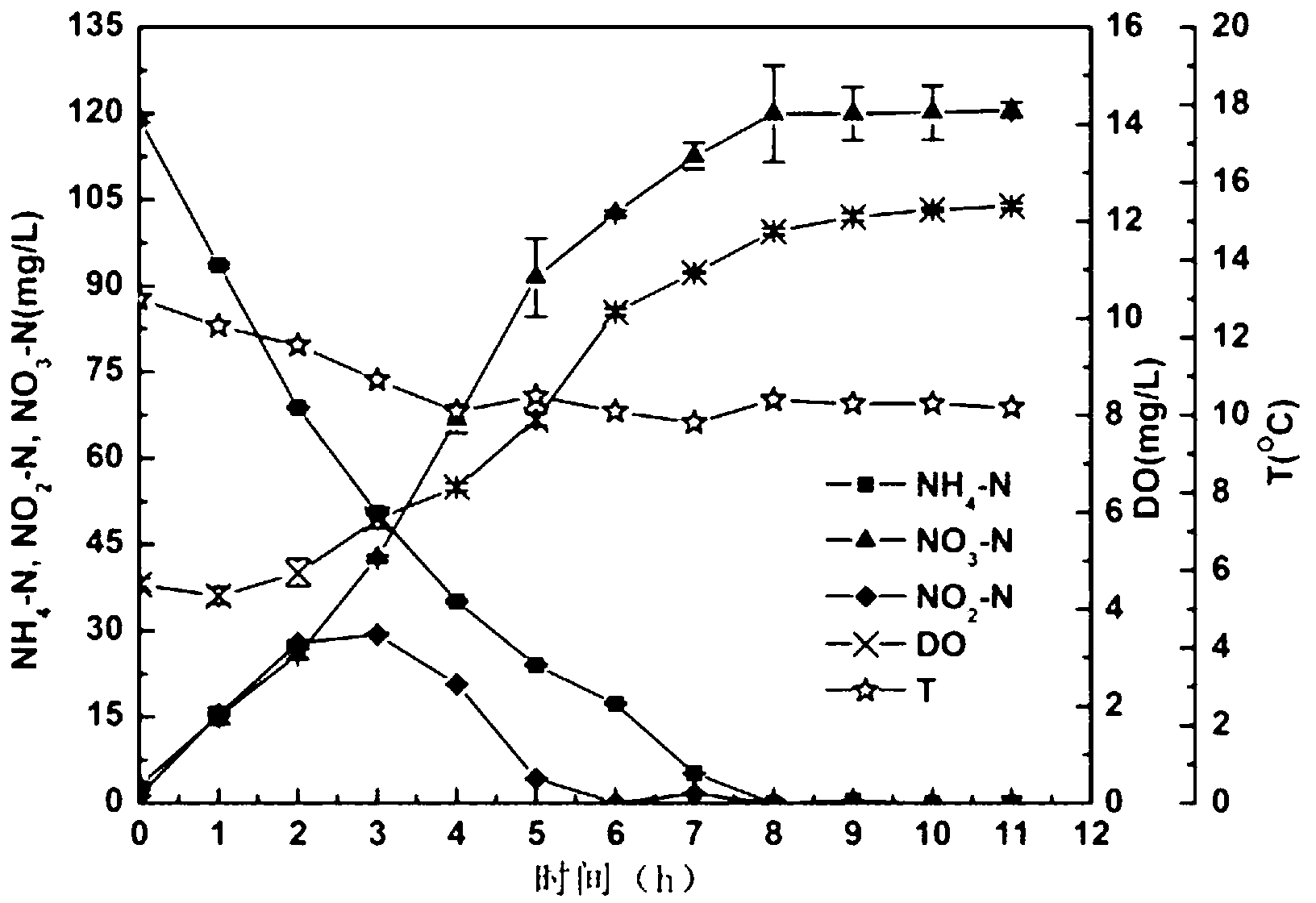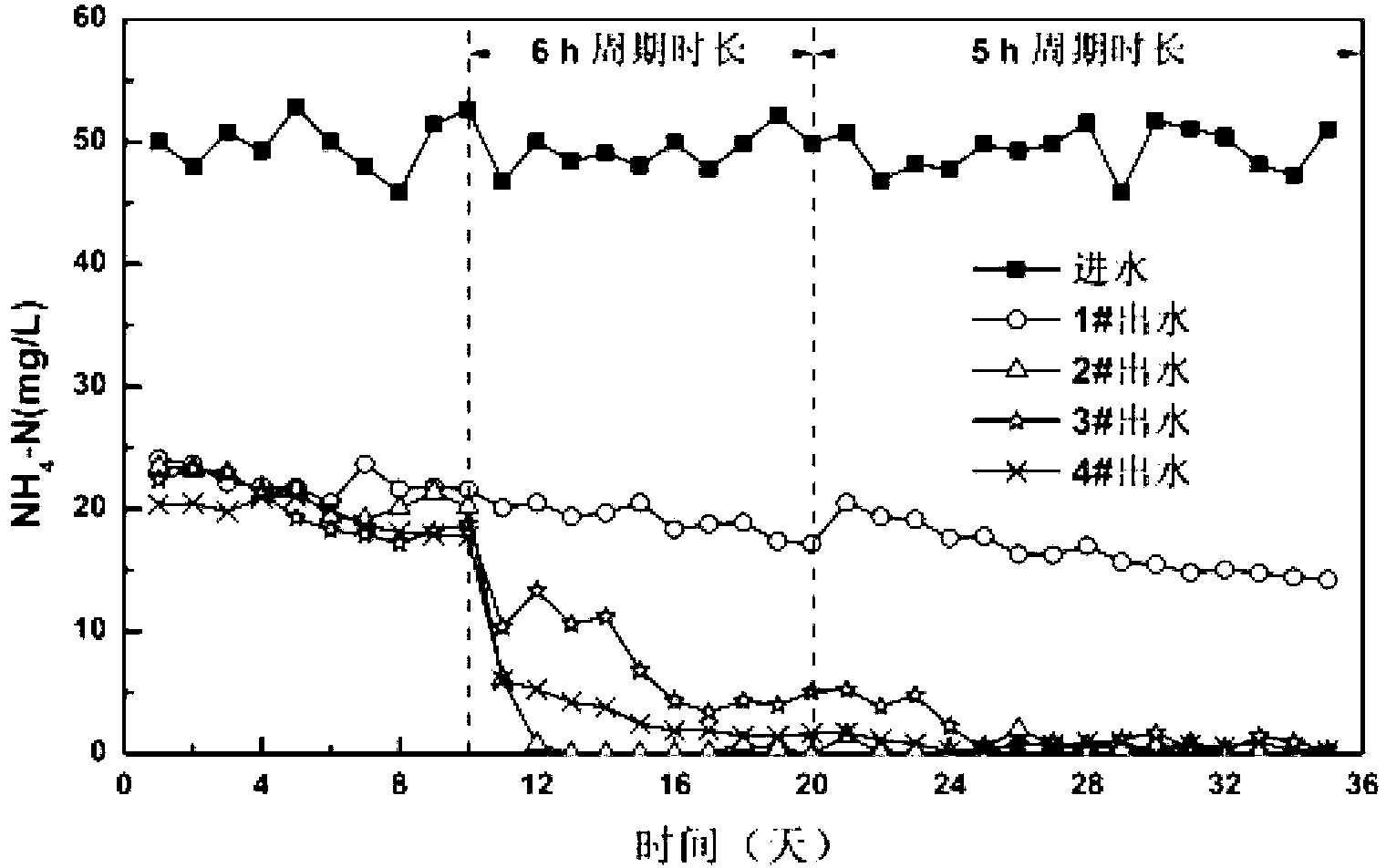Enrichment of low temperature resistant autotrophic nitrification microbial agent and its application in wastewater treatment
A nitrifying bacteria agent, low temperature resistant technology, applied in biological water/sewage treatment, water/sludge/sewage treatment, sustainable biological treatment, etc., can solve the problems of effluent ammonia nitrogen concentration difficult to meet emission standards, low ammonia nitrogen removal effect and other problems , to achieve the effect of rapid time, good social benefits and broad application prospects
- Summary
- Abstract
- Description
- Claims
- Application Information
AI Technical Summary
Problems solved by technology
Method used
Image
Examples
Embodiment 1
[0022] Implementation example 1: Enrichment of low temperature resistant autotrophic nitrifying bacteria agent under low temperature conditions
[0023] The remaining sludge taken from the sequencing batch activated sludge reactor (taken from the low-temperature laboratory of the Institute of Environmental Engineering, Peking University) used to treat synthetic sewage in an ordinary low-temperature laboratory was used as seed sludge for domestication and enrichment under low-temperature conditions. Since nitrifying bacteria are autotrophic bacteria, organic carbon-free and high ammonia nitrogen wastewater is used for enrichment in order to maximize the acquisition of autotrophic nitrifying bacteria. The entire domestication and enrichment process is divided into the following three steps:
[0024] (1) Cultivate and enrich in a 5L SBR with synthetic sewage without organic carbon and high ammonia nitrogen, the aeration rate is 10L / min, the aeration time is 22h, each cycle is 24h...
Embodiment 2
[0036] Implementation example 2: Determination of the nitrification ability of low temperature resistant autotrophic nitrifying bacteria agent under low temperature conditions
[0037] A certain amount of cold-resistant autotrophic nitrifying bacteria enriched in stage 3 of Example 1 was perfused into 5L SBR, so that the initial MLSS was about 3000mg / L. The nitrification ability under low temperature conditions was determined by adding synthetic sewage without organic carbon and high ammonia nitrogen. The aeration rate was controlled at 10L / min, so that the initial DO was about 4-5mg / L. Sample 8mL every 1h in a 10mL centrifuge tube, and measure the DO, temperature and pH value in the system. The liquid sample was centrifuged at 8000rpm for 5min, and the supernatant was taken to measure NH 4 + -N, NO 2 - -N, NO 3 - -N, DO and temperature. The pH in the system is controlled at around 7.0.
[0038] Experimental results such as figure 2shown. It can be seen from the fi...
Embodiment 3
[0039] Implementation example 3: Low temperature-resistant autotrophic nitrifying bacteria agent for low-temperature strengthening effect and optimization of ordinary SBR
[0040] Set up four identical 5L SBRs (1#, 2#, 3# and 4# reactors) in a computer-controlled low-temperature room (the ambient temperature is 10°C), such as figure 1 shown. The ordinary sludge inoculated was taken from the sewage treatment plant (September 20, 2012), so that the initial MLSS of the four reactors was 3000mg / L. The operating cycle of the system is 6 hours (water inflow 0.5h, aeration 4h, standing still 1h, water outlet 0.5h), and discharge 50% of the supernatant at the end of the cycle. The composition of synthetic sewage used is 0.255g / L sodium acetate (200COD), 0.191g / L NH 4 Cl, 0.044g / L KH 2 PO 4 , 0.2g / L CaCl 2 2H 2 O, 0.5g / L NaHCO 3 . HRT and SRT were 12h and 15 days, respectively. The DO in the system is 5.8-7.1mg / L. After 14 days of normal operation, the effluent of the four re...
PUM
 Login to view more
Login to view more Abstract
Description
Claims
Application Information
 Login to view more
Login to view more - R&D Engineer
- R&D Manager
- IP Professional
- Industry Leading Data Capabilities
- Powerful AI technology
- Patent DNA Extraction
Browse by: Latest US Patents, China's latest patents, Technical Efficacy Thesaurus, Application Domain, Technology Topic.
© 2024 PatSnap. All rights reserved.Legal|Privacy policy|Modern Slavery Act Transparency Statement|Sitemap



